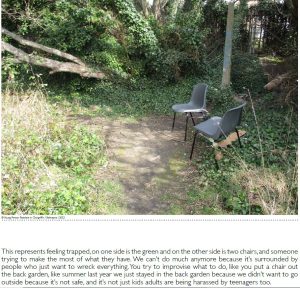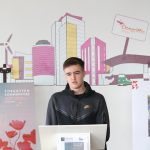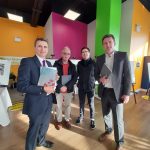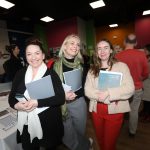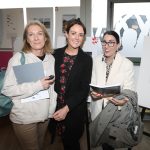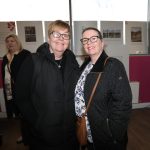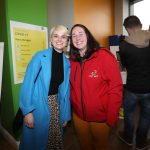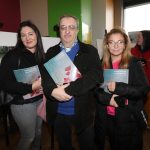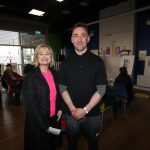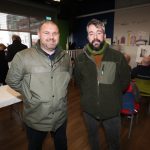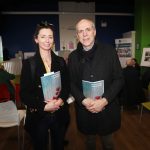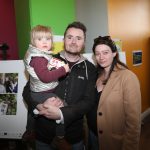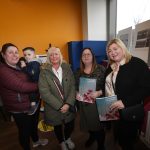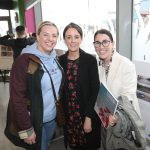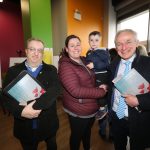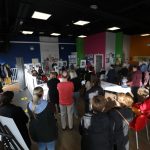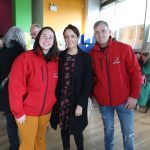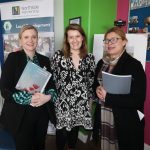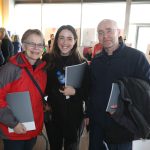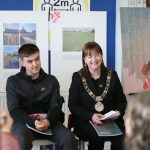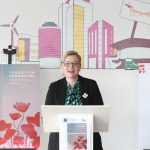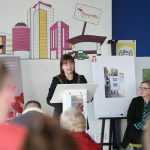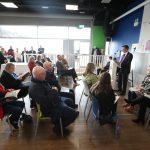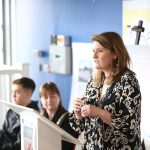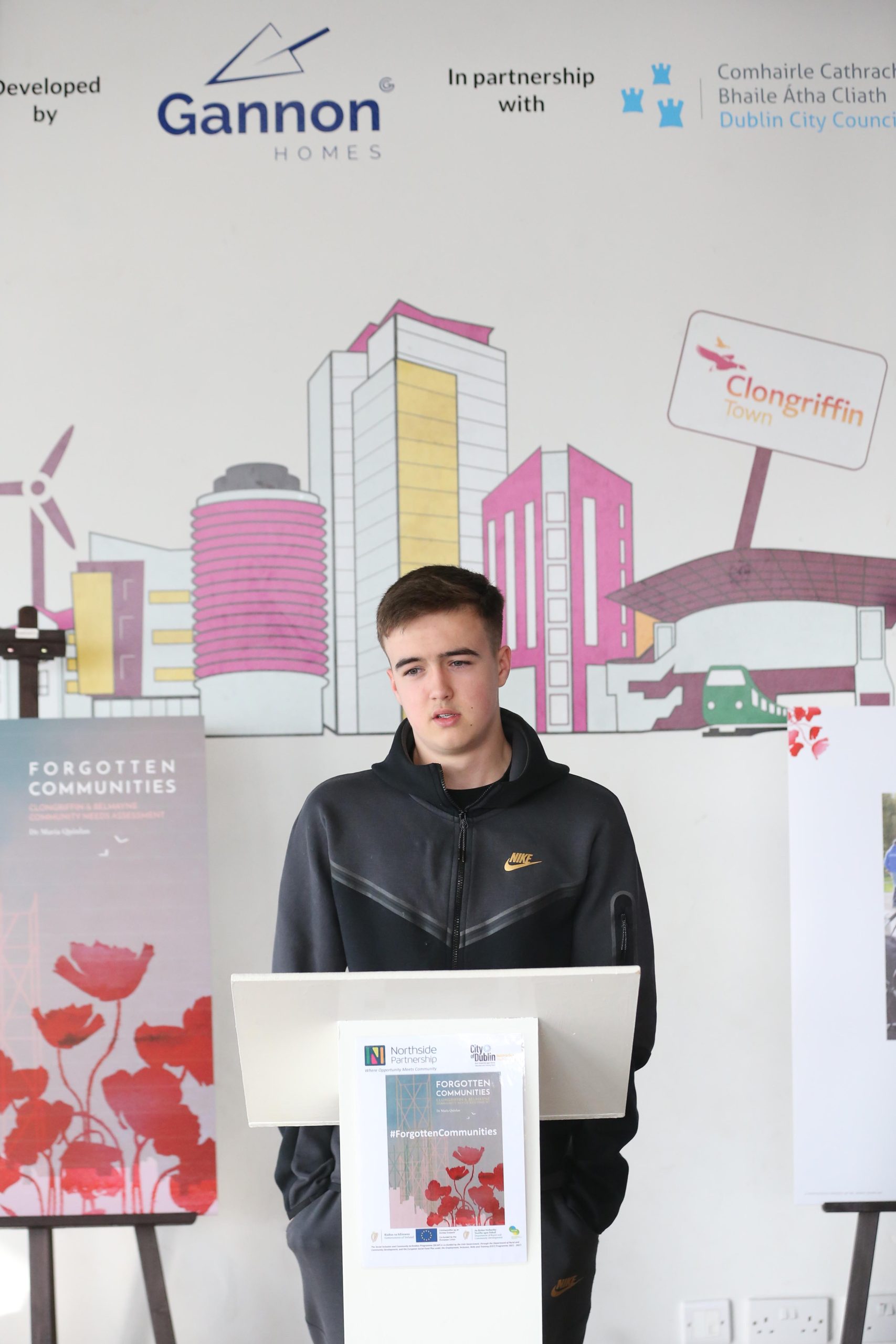
Forgotten Communities: Clongriffin and Belmayne Community Needs Assessment
- Mar, 2023
- |
- Local Development
- |
The Northside Partnership and the City of Dublin Youth Service (CDYS) are delighted to have Lord Mayor of Dublin, Caroline Conroy, launch the ‘Forgotten Communities: Clongriffin and Belmayne Community Needs Assessment’ report and accompanying photography exhibition. The Northside Partnership and the City of Dublin Youth Service commissioned this report in order to gather data and insight into the needs of the residents within the Clongriffin and Belmayne areas, with specific regard to community and service provision. The Junction in Clongriffin was packed with residents, Dublin City Councillors, local TDs and services that operate in the area.
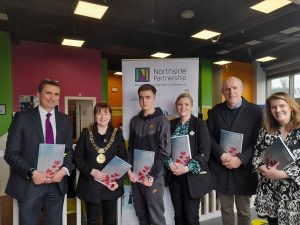
The research was carried out by Dr Maria Quinlan, a sociologist whose specialises in creative
participatory methods which aim to centralise and amplify the voice of communities. In using this innovative approach, this report provides actionable insight which is rooted in the lived experience of people living in the areas. This project included consultation with young people resident in the area, as well as adult residents and voluntary, community and statutory service providers, using a research method called photovoice. Photovoice is a research and advocacy method which uses photographs and narratives as a method for people to tell their own stories directly, as such it aims to democratise how we create knowledge and who’s voice gets listened to.
View the Photovoice images and narratives here.
The research also included an extensive demographic profiling of the community, so that both the number and the nature of the issues could be understood.
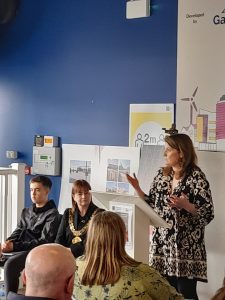
Key Findings:
- Clongriffin and Belmayne have grown at a rapid rate from 2016 to 2022, with an estimated population growth rate which is well above the Dublin average of 8% for that period. Using a variety of secondary sources, the report estimates that the current population of Clongriffin and Belmayne in the region of 13,000, a growth of approx. 60% since 2016.
- While the population has grown significantly, the community amenities needed to support and sustain the community have not kept pace with this growth. Residents and service providers feel that there is a focus on building residential homes without the services and amenities required to truly develop a community.
- The lack of amenities for young people in the area is seen as a key driver of anti-social behaviour by both residents (young people and adults) and service providers. In particular residents and service providers highlight the lack of the proposed community centre and youth facilities; the lack of shops, restaurants, sports clubs, and the kinds of community amenities which bring vibrancy, heart and soul to an area.
- Both residents and services providers report significant hidden mental health, and addiction challenges within the area. Without services offered locally within the community to support vulnerable families, service providers believe that it is hard for them to provide the level of outreach support required to significantly affect change within the community, and to provide the support which they perceive many families need.
“After the property crash, Clongriffin was forgotten about,” according to one resident. “The focus now seems to be to slap up as many apartment blocks and cram as many houses as possible into small clusters of land. No thought is put into the infrastructure to support these developments. And certainly no thought is put into how the existing and new residents are to live here and make the most out of Clongriffin.”
“When I first bought my house in Belmayne 13 years ago it was such a lovely development with great potential,” said another. “It was a happy bright place to be and now I feel it’s been abandoned and forgotten.”
The full report can be read here 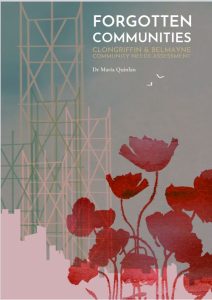
Dr Maria Quinlan, author of the report commented, “Within this research we used photovoice as a method to get behind the numbers and to hear the lived experience behind the official statistics. On paper, the community is considered well-served in terms of amenities for both young people and adult residents, however when you consult with people living in the area directly you can see the disjoin between what policy-makers believe a community needs and the reality of what a community actually requires in order to thrive. For me, this research highlights the importance of policy-makers examining their own assumptions and positionalities about how people live and work, and how communities develop.”
“In commissioning this research, we sought to engage with both communities in a way that elevated their voice and capture the lived experience of residents,” according to Paul Rogers, CEO of Northside Partnership. “In addition, we aimed to develop a more comprehensive picture of the areas from a social and demographic perspective with a view to understanding the challenges faced by the communities and identifying gaps in services that are essential in supporting communities to thrive. In publishing this report, both NSP and CDYS, aim to utilise the report to advocate on behalf of both communities for the increased services, supports and facilities that are essential for a community to flourish. In particular, we recognise the immediate need to provide accessible, multipurpose, community space that can be used as a centre for essential community services and provide a focal point for community engagement and connectivity.”
“We would also like to thank all the residents and community groups from across both areas, who gave of their time and energy in participating in the research and in expressing their views and experience of living in the areas,” says Celene Dunne, CEO of CDYS. “In particular, we would like to thank all the young people who contributed to the research. Given the high numbers of young people growing up in the area, it was critical that their voices and experiences were captured to enable a deeper understanding of community needs”.

